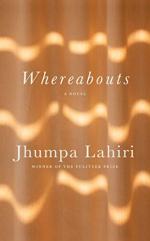|
This section contains 620 words (approx. 2 pages at 400 words per page) |

|
Whereabouts Summary & Study Guide Description
Whereabouts Summary & Study Guide includes comprehensive information and analysis to help you understand the book. This study guide contains the following sections:
This detailed literature summary also contains Quotes and a Free Quiz on Whereabouts by Jhumpa Lahiri.
The following version of this book was used to create the guide: Lahiri, Jhumpa. Whereabouts. Alfred A. Knopf, 2021.
Lahiri’s novel is divided into 46 chapters, each acting as an independent vignette that contributes to the larger arc of the story. The narrator is an unnamed woman in her mid-forties living in an Italian city. The novel takes place roughly over the course of one year.
In the beginning, the narrator describes numerous experiences she has with the city and its inhabitants around her, such as seeing the grave marker of a pedestrian on the roadside or describing the lives of the owner of a trattoria that she frequents. Lahiri uses these early chapters to establish the setting of the novel as well as its narrative style and the first person point of view. Lahiri also introduces the reader to the narrator’s occupation during the first few chapters, establishing her as a writer who works as an instructor although it is not her life’s ambition.
As the novel progresses, the narrative focus shifts from the narrator’s surroundings to her own personality. She recounts her visits to her therapist which have since discontinued, and within that chapter reveals that she views her mother as “oppressive” and “invasive” (33). She also mentions her father, but only insomuch as to say that he died when she was fifteen.
The narrator begins to struggle with her own tendency toward solitude, wondering how to move into deeper personal relationships, or whether she should try at all. “In the Hotel” largely summarizes the narrator’s feelings toward others, in that she despises the crowd that descends on the hotel for the work conference, but finds solace in one stranger whom she finds fascinating but nonetheless keeps at a distance. In the chapter “In August,” the season begins to change during late summer and the crowds in the city begin to thin. As they do, the narrator finds both relief in their absence and a loneliness at the empty streets.
As the narrator struggles with her own solitude, she begins to wonder at her relationship with a friend’s husband and whether or not it could evolve into something romantic. The relationship develops throughout the novel in various chapters, but during “In Winter” and “At His Place,” Lahiri focuses on the narrator’s occupation with it. The narrator finds that she could potentially be romantically attracted to this man under different circumstances, but that any actual movement toward such an eventuality never materializes. In “In Winter,” she goes to a castle with the man and his daughter, but finds that she does not “feel many sparks between us” (115). Afterwards, the man and his wife have a family emergency and she takes care of their dog while they are out of town. In caring for the animal, she realizes the closeness of their family, and in so doing loses her attraction toward him until it “loses its hold over me” (127).
At the conclusion of the novel, the narrator reconsiders her relationship with both her parents and concludes that her father played a larger part in her problems than her mother did. In “At My Mother’s,” the narrator feels little hostility toward her mother, instead feeling dread at her impending death. In “At the Crypt,” however, she visits her father’s grave and reflects that he was ultimately a detached, uninvolved father whose own solitude instilled in her a tendency not to place trust in others. By the end of the novel, the narrator has taken steps toward balancing her desire for solitude with her desire for relationships, and moves from the city for a year to take a fellowship with other academics.
Read more from the Study Guide
|
This section contains 620 words (approx. 2 pages at 400 words per page) |

|



